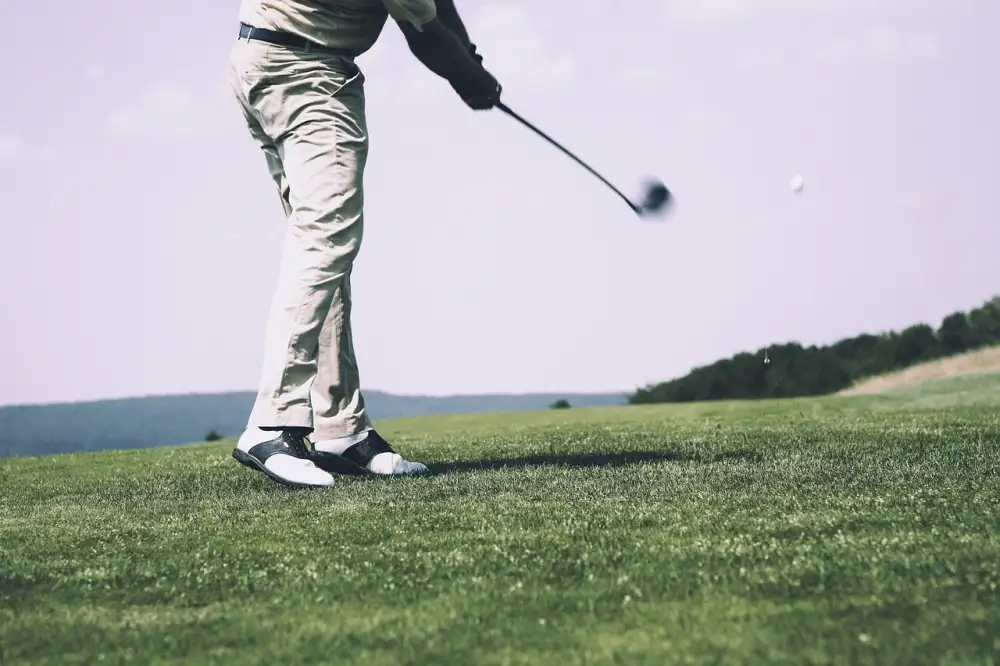Mastering Your Golf Swing: How to Prevent Mid Back Pain and Improve Your Game

Golf is a sport that requires precision, strength, and flexibility. However, many golfers experience mid back pain as a result of their swing mechanics. The repetitive nature of the golf swing, combined with improper technique and posture, can put strain on the muscles and joints in the mid back region. This can lead to discomfort, stiffness, and even injury if not addressed properly. Understanding the causes of mid back pain in golfers is crucial for preventing it and improving overall performance on the course.
Understanding the Mechanics of a Golf Swing
Understanding the mechanics of a golf swing is crucial in preventing mid back pain and improving your game. The golf swing involves a complex series of movements that engage multiple muscle groups, including the core, shoulders, and back. The swing begins with a proper stance, followed by a backswing where the torso rotates to generate power. This is then followed by the downswing and finally the follow-through. Each phase requires coordination and balance to ensure a smooth and efficient swing. Proper sequencing of movements is key to reducing strain on the mid back and preventing injuries.
Common Causes of Mid Back Pain in Golfers
Mid back pain in golfers can be attributed to various factors related to the mechanics of the golf swing. One common cause is overuse or repetitive strain on the muscles and ligaments in the mid back area due to the rotational forces involved in swinging a golf club. Additionally, poor posture during setup and execution of the swing can lead to increased stress on the mid back muscles, resulting in discomfort and pain. It is also important to consider inadequate warm-up routines or lack of flexibility in the thoracic spine, which can contribute to mid back pain during and after playing golf. Understanding these common causes can help golfers take proactive steps to prevent and manage mid back pain effectively.
Importance of Proper Technique and Posture
Proper technique and posture are essential in preventing mid back pain during a golf swing. Maintaining the correct spine angle, shoulder rotation, and weight shift throughout the swing can help distribute the forces evenly on the spine, reducing the risk of injury. Poor posture, such as slouching or arching the back, can lead to excessive strain on the mid back muscles and vertebrae. By focusing on maintaining a neutral spine position and engaging core muscles, golfers can improve their overall stability and reduce the likelihood of developing mid back pain.
Tips for Preventing and Alleviating Mid Back Pain
To prevent and alleviate mid back pain from your golf swing, it is crucial to focus on proper warm-up and stretching routines before hitting the course. Incorporate exercises that target core strength and flexibility, such as planks, side bends, and rotational stretches. Additionally, ensure you have the right equipment that fits your body size and swing style to reduce strain on your mid back. During your game, take breaks between swings to rest your muscles and avoid overexertion. Lastly, listen to your body - if you feel any discomfort or pain, stop playing immediately to prevent further injury.
Seeking Professional Help and Treatment Options
Seeking professional help for mid back pain related to your golf swing is crucial for effective treatment and long-term prevention. A sports medicine physician or physical therapist can assess your swing mechanics, posture, and muscle imbalances to identify the root cause of your pain. They may recommend specific exercises to strengthen core muscles, improve flexibility, and correct any biomechanical issues. In some cases, manual therapy techniques like massage or chiropractic adjustments can provide relief. Remember, early intervention and proper guidance from healthcare professionals can help you get back on the course pain-free and improve your overall performance.
In conclusion, prioritizing back health in golf is crucial for both performance and overall well-being. By understanding the mechanics of a golf swing, identifying common causes of mid back pain, and focusing on proper technique and posture, players can prevent injuries and improve their game. It is essential to listen to your body, seek professional help when needed, and incorporate exercises to strengthen the back muscles. Remember, a healthy back leads to a better swing and a more enjoyable experience on the golf course.
Published: 02. 04. 2024
Category: Health



